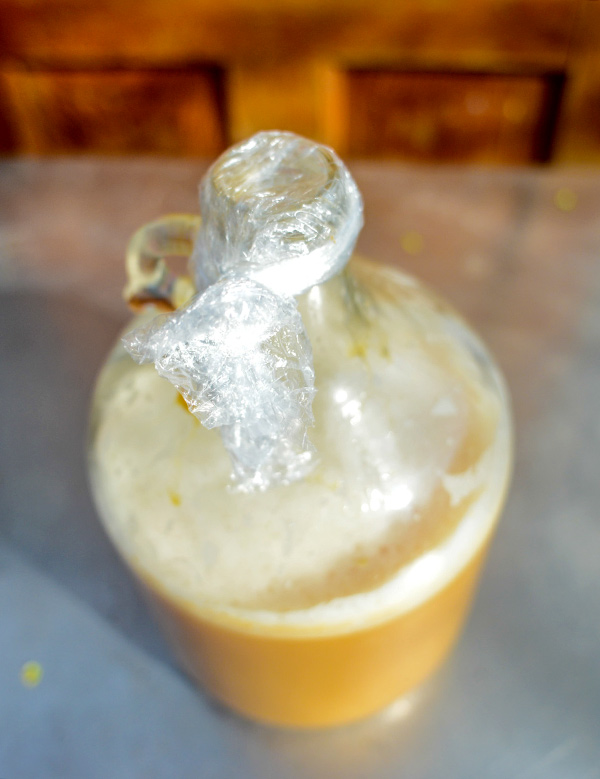
It’s a day or two after the yeast was pitched in your most recent homebrew and there are signs of fermentation in the form of foam called krausen. A few days later, the rocky froth nearly fills the headspace of your fermenter as the yeast work through their busiest period, known as high-krausen.
German lager brewers traditionally took high-krausen wort from a newly fermenting batch and added it to a fully-fermented batch of the same recipe. This process, known as krausening, introduces healthy, new yeast to pick up where the primary yeast—which went dormant due to the layering temperatures—left off.
The Uses of Krausening
Carbonation: Because of the German beer purity law (the Reinheitsgebot), use of sugars not derived from malt was not allowed, so alternative means were needed to supply a small dose of sugar for the yeast to convert and ultimately carbonate beer. The solution was to add high-krausen wort of the same recipe to an already fermented batch to provide the sugar needed for bottle carbonation. The same technique can also be implemented when naturally carbonating in casks and firkins. Some brewers will add non-fermented wort called speise as the priming sugar, but the addition of active yeast from krausening was essential in carbonating lagers.
(Re)Start Fermentation: While all instances of krausening are technically activating fermentation, the process can be used for various instances of either starting or restarting fermentation. Using the krausening technique to initiate fermentation is essentially the same as making a starter, where the entire contents of the starter would be added to the wort at the height of its activity. If you are experiencing stuck fermentation or need to finish off a high-gravity beer, krausening adds more healthy yeast that are up to the task. And, as was the case in traditional brewing, krausening can be used to add more yeast to a finished lager ready for conditioning and carbonation where the initial yeast has gone dormant due to the chilly fermentation temperatures.
Cleaning Up “Green” & Off Flavors: While carbonation was the primary goal of krausening in traditional German lager brewing, it was also recognized as a way to clean up some of the “green” qualities found in young beer by aiding the maturation process. It can also be used to help with flaws such as diacetyl and acetylaldehyde. Adding more yeast through krausening is also said to help reduce oxidation in batches that may have been unintentionally aerated.
Practical Applications for Homebrewers
For the homebrewer, krausening is not always a practical procedure. It is much simpler to just mix up a priming sugar solution and add it to the un-carbonated beer rather than saving or re-brewing wort for krausening. Of course, if you want to truly replicate a historical German lager or experience a different brewing technique, then this is a great opportunity.
If you do decide to pursue krausening, bear in mind there is a high risk for contamination. Clarity can also become an issue since homebrewers don’t typically have the filtering methods available to commercial brewers.
However, krausening does have benefits that may be tempting to the homebrewer. If using krausening as a means to carbonate bottled beer, particularly smaller batches, you can rest assured that you are not diluting your beer with sugar water. Krausening can also be used to clean up the “green” flavors in beer or possible oxidation. The tricky part with this is needing to use the same wort as the main batch, so you either need to store wort from the original batch or brew a new, identical batch.
For information on how to caluclate the amount of wort needed when krausening, visit the BeerSmith blog.
Sources: Brewing Better Beer by Gordon Strong; How To Brew by John Palmer; The Oxford Companion to Beer by Garret Oliver et al; “Krausening Home Brewed Beer” by Brad Smith (BeerSmith Blog)




Share Post